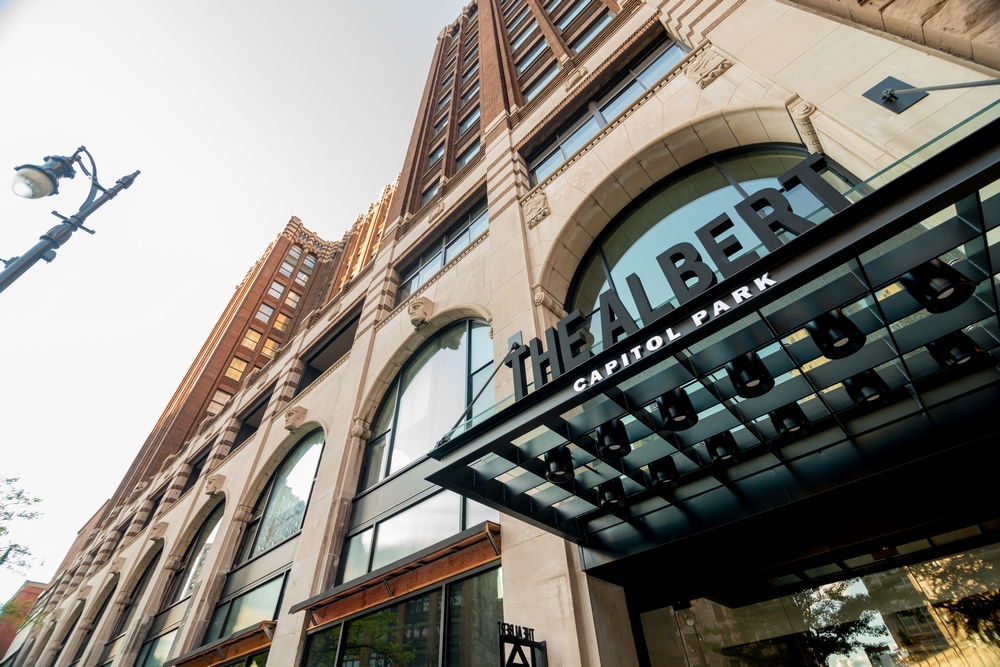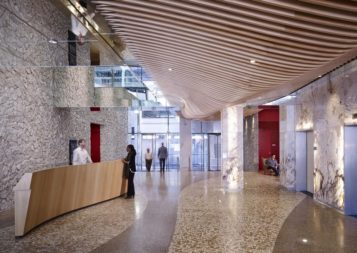
Historic renovation challenges, best practices and real-world takeaways
By Todd Sachse and Steve Berlage
A well-executed historic renovation can result in a masterpiece: a building with a blend of historical resonance and modern conveniences, where the preservation of architectural details and the original bones of the structure can help contribute to a memorable and defining sense of place. At a time when everything from residential towers to office space and from hotels to retail venues is looking for a way to stand out from the competition, a historic renovation makes it possible for the property owner to present something truly unique.
Historic renovations present an array of potentially formidable design and construction challenges, and construction superintendents should not only familiarize themselves with those challenges, but should be equipped to comfortably and efficiently navigate the unique complexities of the historic renovation process.
Unexpected surprises
Perhaps the biggest challenge confronting construction superintendents working on a historic renovation is simply the uncertainty. Historic renovations are notoriously unpredictable, and you never know what you are going to uncover as the demolition and construction process moves forward. Unlike with new construction, when any problems you encounter are likely to be of your own making, historic renovations often demand that you resolve someone else’s problems. Things rarely, if ever, go according to plan, and new surprises pop up all the time. It is a little bit like peeling the layers of an onion: you never know what you are going to find when you pull down that wall or break up that floor.
You may have an experience like our own, where you are in the process of putting in a footing and discover a 10-by-10 block of concrete buried in the ground. Abandoned buried fuel tanks are all too common and, with wood construction, you might cut into a ceiling and discover that wood joists are missing or have been replaced by materials that are not structurally sound. Anytime the original builder took shortcuts to make those issues fit or to save a few bucks, your team will have to go back and correct that before moving forward.
New challenges
While unwelcome surprises can be a challenge, the inherent unpredictability of the historic renovation process is not just limited to shocking discoveries. There are so many small but important details that you simply cannot see before demolition is completed. Beam heights and other details that are unknowable beforehand can have a significant impact on design decisions that have to be made on the fly. Older buildings were built without modern mechanical systems in mind, so fitting in new ductwork, mechanical piping and electrical systems can be challenging. In many cases, the existing infrastructure may simply not accommodate the preferred system or solution, and alternatives will need to be considered.
Deteriorated or unsafe/structurally unsound structures obviously pose not only an inconvenience, but a potential hazard. Some of the most significant challenges inherent to working with older buildings have to do with toxic materials like lead and asbestos. Asbestos was a very common building material, and can be found in everything from floor tiles and plaster walls to things like pipe wrap, window gaskets and sealant. Even copper wires were often wrapped with asbestos. A particular concern with asbestos is when the material breaks down. In some cases, the fibers could have spread, contaminating a much larger area and requiring the safe removal/abatement of not only the original asbestos-containing material, but all contaminated material.
Priorities and best practices
When starting a historic renovation project for the first time, the biggest general priorities can be boiled down to three simple strategies:
- Pay attention to the details
- Try to anticipate and plan for unforeseen conditions
- Look for creative solutions to problems – renovations are almost never simple or straightforward
As for specifics, the following list of priorities and best practices provides a good place to start for those new to the historic renovation process:
Familiarize yourself with the building
Take time beforehand to do research and closely examine the building. Walk through and consider potential issues – going board by board and brick by brick.
Protect historic features
Be sure existing historic features are protected during the course of construction. Sometimes that means preserving big features and iconic historical elements, but sometimes it requires looking out for subtler – but not less important – design elements or textural details.
Understand and replicate historic components
Understand the historic components of a building, and be sure the details are exactly replicated (oftentimes with modern materials). This can be surprisingly tricky, and even things like color matching for paint and grout can present problems.
Review essential documentation
Be sure to review all relevant documents thoroughly – especially historic applications and approvals from the state – to understand which areas are sensitive and deemed historic.
Prepare for hazardous materials
Be certain that a hazardous material survey has been conducted and that you can identify the contaminated material delineated within. Keep in mind that the survey is only as good as what the inspector can see, so educating yourself about what common hazardous materials look like is important. If you come across something not on the survey, halt work immediately and seek appropriate guidance from an expert.
Be flexible and provide options
Unforeseen issues will invariably arise. Consequently, almost every renovation faces challenges with the construction timeline. When that happens, communicate clearly with the owner and other interested parties. Give them detailed plans/options to move forward, considering not just design and construction issues, but financial and time implications.
Foster creativity
Be creative. Finding solutions that work and are cost-effective is not always easy, and frequently requires an unconventional or unorthodox approach. Be willing and able to work with historic renovation specialists and integrate their expertise into a collaborative problem-solving process.
Prioritize experience
Experience is key, and historic renovation work comes with a steep learning curve. When possible, work with an experienced architect, a historic consultant or a construction supervisor with experience in this kind of work. The more experience you have at your disposal, the better you will be able to see the challenges of historic renovations coming, and the better equipped you will be to resolve those issues in an expeditious and cost-effective manner.
Sachse Construction CEO Todd Sachse and President Steve Berlage authored the article, with historic renovation expert team members Kevin Blind and Bill Verbeek. Visit www.sachseconstruction.com.







 Join our thriving community of 70,000+ superintendents and trade professionals on LinkedIn!
Join our thriving community of 70,000+ superintendents and trade professionals on LinkedIn! Search our job board for your next opportunity, or post an opening within your company.
Search our job board for your next opportunity, or post an opening within your company. Subscribe to our monthly
Construction Superintendent eNewsletter and stay current.
Subscribe to our monthly
Construction Superintendent eNewsletter and stay current.